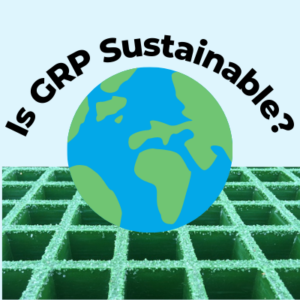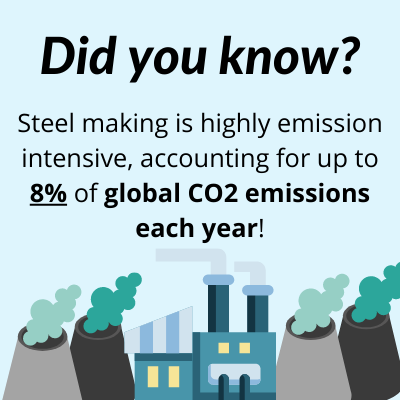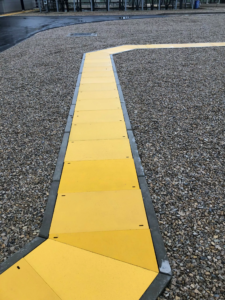GRP and The Environment

As the climate crisis deepens, we are all looking for ways we can become more environmentally friendly, and for products that are more sustainable. This includes the construction industry, where more and more questions about the life cycle of materials are rightfully being asked. GRP is often suggested as an alternative to wood and metal, but is GRP / FRP a sustainable option?
Environmental Problems Associated With The Supply of Traditional Materials:
It is well documented that the manufacturing and production of traditional materials such as wood and metal currently create a multitude of environmental concerns.
In the timber industry for example, a report from the WWF (https://www.worldwildlife.org/industries/timber) found that roughly 8–10% of the global timber production and forest products are in violation of national laws. The situation worsens in the case of some of the most valuable and threatened global forests, where illegal logging accounts for 40–60% of the total timber production.
Additionally, in the metal industry, the volume of greenhouse gas emissions, water contaminants and energy consumed during production are all major contributors to global warming. The environmental impact of its production is enormous, yet the world produces about 1800 million tons of it each year.
On the other hand, the manufacturing process of GRP is very different:

The Manufacturing Process of GRP:
Whilst the production of metals such as steel and aluminium creates harmful by-products, the pultrusion of GRP is typically an exothermic process. It gives off heat, using very little energy and reducing the amount of water needed for cooling processes.
The process also produces less greenhouse gases and toxic emissions. Some studies have suggested that GRP production uses approximately 75% less energy and only produces 1/3 of the amount of CO2 produced when compared to steel.
In addition, the raw material needed for the glass fibres used is sand, an abundant resource that is not expected to be exhausted and the resin used is derived from a by-product of refined crude oil
Is GRP Sustainable?
GRP is an incredibly durable and long-lasting product. Its longer life cycle means it is less likely to require maintenance or replacement compared to traditional materials. This brings a whole host of environmental benefits.
Firstly, GRP is extremely lightweight. This means less need for heavy machinery and a reduction in carbon emission producing transport used to transport materials across the globe. This benefit is replicated on site, as no heavy machinery is required for install or to reach remote locations and there’s no hot metal working on site.
Secondly, plastic is renowned for its long lifespan. A longer lasting product means less manufacturing and a reduction in the use of raw materials. Although the lifespan of plastic is not typically considered environmentally friendly, this is only for single use products. The durability of GRP and the fact it does not degrade over time makes it the ideal construction material.
In addition, other raw materials require harmful finishing or preservation methods such as hot dip galvanising and painting. This is not necessary for GRP.
To understand more about the many benefits of GRP, read our helpful article here:

Is GRP Recyclable? End of Life Use For GRP:
Previously, most GRP waste in the UK was sent to landfill due to its intrinsic thermoset composite nature, and a lack of understanding of end-of-life options. However, progress in research and innovation means this is now changing, and a number of different options can be explored.
• Incineration: GRP can be sent to energy from waste plants to be incinerated. Energy is recovered from the organic fraction and waste processed into a fuel source. The incinerator bottom ash may be processed into aggregates or used in construction applications, though in some cases it is still landfilled.
• Recycle to concrete: Ground GRP waste powder used as an admixture or replacement to fine aggregate in concrete. Studies have shown this to potentially give increased strength with reduced weight.
• Use of off-cuts: Fabrication creates off-cuts, but these off-cuts can easily be repurposed for use in other projects. Additionally, as pieces are typically fixed down (unlike metalwork which is usually welded), when the product is no longer needed it can be removed and repurposed.
More information on sustainability and end of life options for composites can be found on Composites UK – the UK Trade Body for the composites industry.

